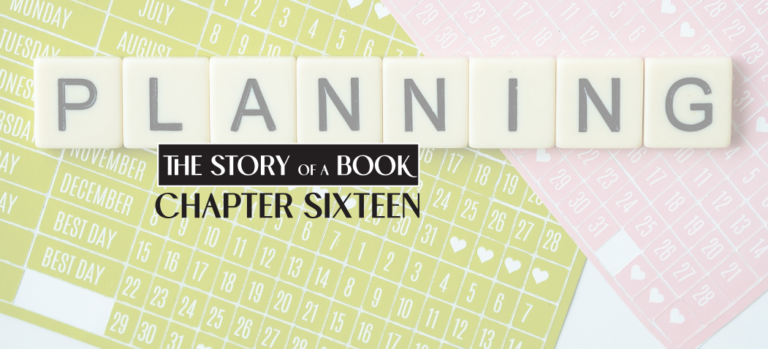The Bomber Jacket from First Page to Finally, Published!
Creating Characters Who Capture Your Heart
In 1996, after American college student Beth Schmidt buys a British World War II vintage bomber jacket, the pungent smell of fuel, the taste of metal, and snatches of cockpit dialogue invade her dreams and compel her to enroll for a semester in Scotland as an excuse to search for traces of the pilot with a highland brogue and before long, the veil between past and present becomes ever thinner.
That cover blurb of The Bomber Jacket encapsulates the plot and the driving motivation of the character around which my book revolves. I was intrigued by the idea of a college girl who slowly becomes obsessed with finding the original owner of her vintage jacket. A girl with the unwanted and uncanny ability to hear the pilot’s voice and thoughts in her dreams, see ghostly images of him in places he’d been, and experiencing snatches of his life in “waking dreams.”
I started the novel in 2005, the year after our second trip to Scotland. Her name wasn’t Beth then. I called her Carrie, then Kerry. Somewhere along the line I changed it to Beth. I wrote the first three chapters quickly, then came to a screeching halt, stuck. Up to that point, my writing was organic, and flowed from my imagination to the page, without thinking much about it. That was how I had been writing a young adult fantasy series—I wrote it when the story appeared and stopped when it faded. No wonder it took me ten years to write the four books in that series.
But The Bomber Jacket was an entirely different beast—a historical novel set in Scotland. I needed to do lots of research and create characters who accurately reflected their time period. Somewhere I had picked up the book, The Weekend Novelist by Robert J. Ray, “a dynamic 52-week program to help you produce a finished novel…one weekend at a time.” It was just the guidance I needed.
Ray’s approach is to begin by shaping the characters. I started with Beth. First order of business—The Character Sketch, a detailed list describing appearance, clothing, poses, imperfections, home, favorite room, habits, vehicle and motive. Hair: light brown, bleached blonde streaks in the summer by sun; straight, ends to be stringy, very fine; hangs several inches over her shoulders.
Next, The Chronology, a timeline of important events from birth to the day the character appears on the page. Age 10, early fall 1984: Henry has another heart attack (age 68) at work. Beth answers phone call from doctor, runs to Naomi at church meeting. Naomi tells her in front of everyone that Beth is the reason Henry has to work so hard and pay for all the frivolous things she wants like ballet classes.
Choosing one of the events from this timeline, you then write A Brief Backstory. Here’s an excerpt from four-pages of A visit to see Great-Grandma Dunst in the nursing home (Fall of 1979, age 5.)
“Gretchen,” the old woman whispered in a raspy, trembling voice, using the grip on Beth’s upper arms to pull herself closer, “Gretchen, my little girl. I knew you’d come back home. I didn’t mean what I said.”
Beth tried to back away, for the old woman’s breath smelled of her tuna fish lunch and rarely brushed teeth, but she replied at the same time, “No, Nanna Dunst, No. I’m Beth. Susanna Elizabeth Schmidt,” proudly reciting her whole name as she had learned to say it in nursery school, though she preferred Beth, which was what her Grandpa usually called her.
Naomi pushed Henry out of the way and yanked Beth backward, pulling her out of Nanna Dunst’s tight grip so that her yellowed, broken nails scraped painfully across Beth’s upper arms, exposed in her short-sleeved Sunday dress.
Naomi gave Beth a shake with each word she spat at her mother. “This… is… not… Gretchen… this… is… Beth.”

Wants is the next step in The Weekend Novelist’s method of character development. Rather than a list, I wrote it in Beth’s voice: I would like to just feel, for once in my life, that I belonged somewhere, to someone. I’ve always felt like an imposition to my grandmother, like a bother. I know raising me hasn’t been easy. She isn’t young…
Each of these deep dives into Beth’s character added layers of complexity and put flesh on the bare bones idea of an American college student who buys a vintage bomber jacket. Writing a Dream was one of my favorite assignments. For years I’ve recorded my dreams in my journal, contemplating their symbolism and possible meanings. The dream I wrote for Beth ended up almost word-for-word in the novel: In the dream I was surrounded by smells, and after a while, sounds. I could smell the smell of oil, engine oil, like when Grandpa changes the car oil. A smell that feels thick. Like my head feels thick, weighted down, like my thoughts feel thick, like I am trying emerge from the bottom up through a pool of molasses, all sticky heaviness pulling me down into forgetfulness.
The instruction to Describe a Closet was fun and challenging: mentally open the closet door, sit on the floor and write down in detail everything you “see.” Among the things I saw: …on her shoe shelves she has: sneakers—off brands which she buys at the end of the season; Rockport hiking boots—thick, padded, brown leather which she polishes and maintains, her favorite shoes; Granny Boots – ankle length, lace up boots, two pair, one black and one brown, scuffed, worn…
The final task was The Ritual Activity List. For Beth I wrote three or four paragraphs under the headings: In the Morning, Breakfast, Friday Nights, Saturdays, Saturday Nights with Henry, and In the Bath. Here’s the beginning of her morning rituals: Beth hates to get up. She loves the warm comfortable bed, especially in the winter. She sets the alarm early, for 5:30, in hopes of getting up in time to do early morning yoga and journaling, but she consistently hits the snooze button on her alarm clock, three, four or five times. When she does finally wake up, she lies awake in bed and thinks about the day ahead. Mentally plans out her day, where she has to go, what she has to do, who she will be seeing, and finally, what she will wear.
In total, eighteen single-spaced pages of Beth’s character backstory. By the time I was done, she felt like a real flesh and blood person. Someone I cared about. Then I proceeded to do the same detailed, time-consuming, intensive dive into my other main characters: Henry, Naomi, Robbie, Gretchen and Colin.
All before I put them on the page.







